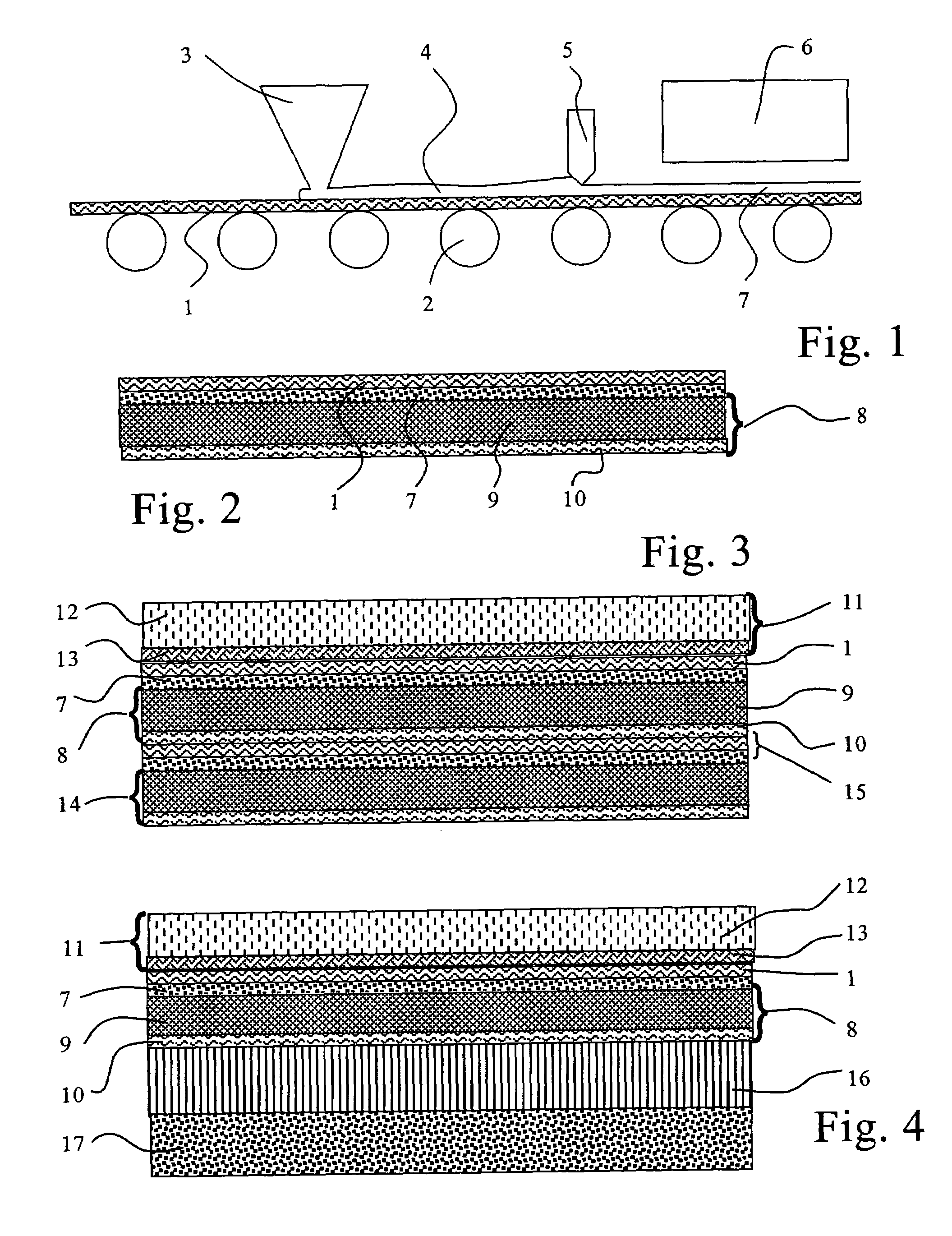Construction of playing surfaces
a construction and playing surface technology, applied in the field of playing surface construction, can solve the problems of high labor intensity, degrade the performance of the ias, and high cost of aggregate infill spillage at the installation site,
- Summary
- Abstract
- Description
- Claims
- Application Information
AI Technical Summary
Benefits of technology
Problems solved by technology
Method used
Image
Examples
Embodiment Construction
[0033]In FIG. 1 a textile web 1 is carried by a conveyor 2 beneath an applicator 3 where a fluid layer 4 of rubber particles in a resin binder is applied. The web passes beneath a doctor blade 5 where this fluid layer is levelled and its thickness regulated, and thence beneath an appropriate curing device 6 where the fluid layer is cured to become an adherent resin bound layer of rubber particles 7.
[0034]The resin bonded layer of rubber particles is suitably up to 10 mm in thickness, containing rubber in amounts of 0.5 to 4 kg / m2.
[0035]In FIG. 2, a playing surface structure includes a resin impregnated textile layer 1 having a resin bonded layer of particulate rubber 7 adherent to its undersurface and overlying a fibrous random pile mat 8 incorporating a random pile layer 9 and a relatively compact, resin impregnated backing layer 10.
[0036]In FIG. 3, the resin impregnated textile layer of FIG. 1 is covered by a surface carpet layer 11 having a pile 12 and a backing 13. The surface c...
PUM
| Property | Measurement | Unit |
|---|---|---|
| Thickness | aaaaa | aaaaa |
| Length | aaaaa | aaaaa |
| Surface structure | aaaaa | aaaaa |
Abstract
Description
Claims
Application Information
 Login to View More
Login to View More - R&D
- Intellectual Property
- Life Sciences
- Materials
- Tech Scout
- Unparalleled Data Quality
- Higher Quality Content
- 60% Fewer Hallucinations
Browse by: Latest US Patents, China's latest patents, Technical Efficacy Thesaurus, Application Domain, Technology Topic, Popular Technical Reports.
© 2025 PatSnap. All rights reserved.Legal|Privacy policy|Modern Slavery Act Transparency Statement|Sitemap|About US| Contact US: help@patsnap.com


